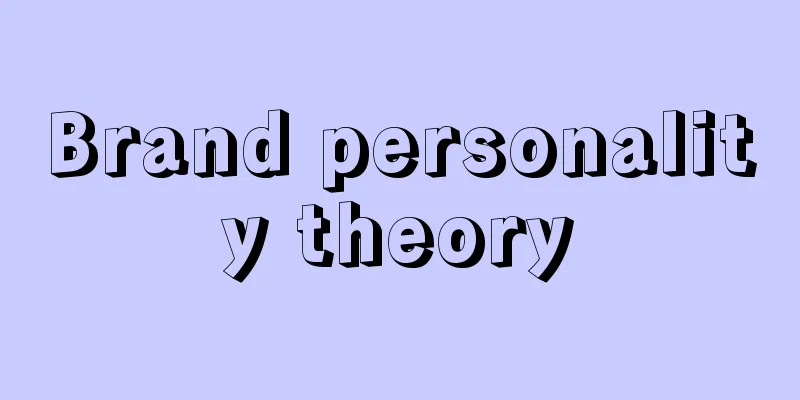Brand personality theory

Brands are like people. Only people with personality can be truly appreciated and liked. For example, Kobe, Jackson, and Jobs, who have passed away, all have their own unique personalities. Kobe was embroiled in sexual assault scandals; Jackson was disgraced by the child molestation scandal; Jobs’ bad temper scared people who worked with him. But these “negative” news did not affect their path to becoming a god. This shows the importance of “personality”. 1. Basic characteristics of 18 brands in 5 categoriesWhat are the characteristics of brands? Brand experts have put a lot of effort into this area and have summarized 18 basic characteristics of brands in five categories. 1. Represents a sincere character. Practical, honest, healthy, and cheerful characters all represent pragmatism.Nongfu Spring’s slogan is “We don’t produce water, we are just nature’s porters”. This is a typical pragmatic brand personality. Many people think that Zhong Shanshan, the founder of Nongfu Spring, is good at public relations and hype, but many people overlook a very important attribute of Nongfu Spring, that is, Nongfu Spring basically does what it says, for example, Nongfu Spring says “We don’t produce distilled water, we only make natural water” and so on. The brand personality conveyed to users is pragmatic, and this pragmatic personality, coupled with inexpensive products and unpretentious packaging, has helped Nongfu Spring enter thousands of households, every conference venue, and even hotel rooms. 2. Represents a stimulating personality, bold, lively, imaginative, and modernXiaomi was born for fever, Apple's re-imagination, and Durex's constant stepping on the line to gain popularity are all designed to be stimulating. 3. A character that symbolizes competence, reliability, intelligence, success, and responsibilityMicrosoft and Honda fall into this category. 4. Represents a refined character, noble, charming, delicate, peacefulChanel, MUJI, and Starbucks all fall into this category. 5. Represents tough character, outdoorsy, strongFor example, Land Rover and Marlboro belong to this category. Marlboro has a white horse and a cowboy, and then shouts out, this is the world of Marlboro. That kind of tough character and image emerges spontaneously. 2. Three factors that determine brand personality and image positioningAfter reading the 18 personalities in 5 categories, do you feel a little dizzy? With so many brand personalities, how should you choose your own brand? From what perspectives should you think about what kind of personality your brand should have? What kind of image should it have? The three main factors that determine the brand personality and image positioning are:
1. What is the personality of the consumer group we are facing?Why do many brands use personality shaping? Because consumers often seek consistency between the brand's "character" and their own personality through using products. If I want to go "wild" and am a person who desires power and freedom, I might buy a Land Rover. If I think I am a noble and stable person, I might buy a Mercedes-Benz. If I think I am a person who pursues youth and fashion, I might buy a BMW. A product is a label that often expresses "who I am" to others and constantly tells me "who I am". Why is Coca-Cola now called "fat house water"? And how did Yuanqi Forest become a beverage for healthy and positive people? This is a very interesting change in the process of brand character building. Psychologists once conducted an experiment in which they distributed some brand-name bags to a group of women, told them that they were high-quality counterfeits, and asked them to walk around the mall with them. Then they were asked to take an IQ test, and the results showed that the proportion of women cheating increased significantly. Holding a "high-end imitation bag" creates a subconscious psychological impression on these people, making them feel more like a hypocritical person, which automatically lowers their moral standards and increases cheating in the next exam. "Anyway, I am a hypocritical person." These influences occur at the subconscious level, and people cannot directly perceive them - the products we use every day and the services we choose are actually subtly influencing our behavior or character pursuits. Therefore, as consumers, if we can actively choose, we are more inclined to choose products that are consistent with our own "personality image". When companies do brand planning, the first thing they consider is whether the "personalized" image of their brands and products, highlighted through personality and image, is consistent with the personality of the target consumer group. There are two main types of human personality: ideal personality (who we want to be) and actual personality (who we are now). The product personality is either the same as the target consumer's ideal personality or the same as their real personality. If it is a product for public use (such as clothes), the brand is often shaped into the consumer's ideal personality (at this time, the consumer uses the product to show the image to the outside world). If it is a product for personal use (such as bed sheets), the brand is often shaped into the consumer's real personality (at this time, the consumer mainly uses the product to show the image to himself). Take mobile phones as an example. Mobile phones are a product that needs to be used publicly and displays personal image, so mobile phone manufacturers often create an "ideal personality". In the early days, Xiaomi mobile phones focused on "cost-effectiveness", and the real personality of consumers should be: a thrifty and pragmatic person. If we directly shape the brand personality in this way, it may attract negative symbols - Xiaomi, the phone used by losers. Therefore, the personality that Xiaomi shapes is the "ideal personality" of this part of consumers - audiophiles. And it is said that "born for audiophiles" - I use Xiaomi mobile phones not because I don't have money to buy more expensive mobile phones, but because I am an audiophile. For example, Apple has previously created an image of "Think different", but the real personality of its consumers may not be like this (only a few people are different). What Apple created at that time was actually the ideal personality of its main consumers. For many products that are not used publicly, it is more inclined to use the real personality of the main consumers. For example, many shampoos advocate "natural and healthy", which is the personality that their users will show when considering shampoo. 2. What role do our products and services play in consumers’ life scenarios?All brand personalities will eventually be reflected in the "brand story", so shaping brand personality needs to be based on your brand story. What is a brand story? There are many different opinions, but I think the so-called brand story is: what role your product plays in what storyline. For example, the typical brand story of Red Star Erguotou is as follows:
Naturally, in this story, the brand needs to have a "tough" personality such as "strong", "hearty" and "powerful". When telling brand stories, different product categories play different roles and functions in life, so the direction of the story is different, and the personality embodied in the end is also different. For example, furniture, daily necessities, and real estate, if for young people, they may be able to tell brand stories from the perspective of these things that can create a better life or a better love. For example, in the case of alcohol, we can see brand stories that talk about men’s emotions, and also brand stories that link alcohol with good things. For example, some products play the role of “relationship substitute” in brand stories, replacing a certain existing relationship and becoming your companion. In many advertisements for Kindle e-books, Kindle plays the role of a "relationship substitute". There should be at least two protagonists in the story and they should have a relationship. But Kindle replaces one of the protagonists - it's not you playing with a friend, but Kindle is reading and thinking with you (unfortunately, Kindle has withdrawn from the Chinese market). For example, in many car brand stories, a person is driving a car in the suburbs, and the role played by the car at this time is a "relationship substitute" - it is the car that accompanies you on the ride, rather than being another protagonist. 3. What kind of image do competitors present to the same consumer groups?When choosing and shaping a brand personality, you need to consider your consumers - what is their ideal self? What is their real self? You need to consider the role your product plays in the story - in my brand story, what role does my product play and what personality should it correspond to? In addition, as with all marketing, you need to consider your competitors’ actions. “If most of your competitors are trying to create a personality, change it.” Creating a personality that goes against your competitors and telling a brand story that goes against your competitors can often yield unexpected results. When we made the White Elephant Big Bone Noodles, we adopted a strategy that was the opposite of our competitors. The image and story created by Master Kong is that it is delicious, and the image and story created by Uni-President is that it can make you full no matter what the scenario. White Elephant Big Bone Noodles chose to do the opposite, focusing on how to select good bones and boil out collagen to make the soup more delicious and more nutritious. For example, tofu gives people the impression of being "feminine and weak", but a very popular tofu shop in Japan does the opposite. It is called "Otomae Tofu Shop", creating an image of masculinity and strength, which contrasts with the public's inherent impression of the tofu industry, thus successfully creating a deep impression. Almost all sports brands embody a "stimulating personality" (advocating personal struggle, challenging oneself, etc.), such as Adidas's "Nothing is impossible", Nike's "Just do it", and even domestic brands' "Keep moving", etc. However, the American sports brand UA has created a "capable personality", embodying an image of "intelligent, technical, and teamwork", and even its advertisements are dominated by multiple people. When choosing and shaping your brand personality, you need to ask yourself: Among my optional personalities, which ones are crowded with competitors? Which ones can I selectively break through? People have personality, brands have character, and what supports brand character is the brand's personality and image. When shaping brand character, companies cannot just make decisions based on their own ideas. They need to comprehensively consider the personality of your consumers (ideal self vs. real self), the role of your product (brand story), and the choices of your competitors. Only in this way can you achieve twice the result with half the effort in brand building. Author: Liu Yichun Source: WeChat public account "Liu Yichun's Brand Business Innovation (ID: shangyeyiguohui)" |
Recommend
Lazada announces the rhythm and gameplay of Double 11 activities at each site
On October 31, Lazada officially announced the rhy...
Is there any promotion on Amazon during Double Eleven? How to use the discount code?
Double Eleven is indeed a good time to buy oversea...
Sam is not without anxiety
Sam's Club, which has been advancing rapidly i...
16 marketing insights that you should take a look at
Want to learn about marketing? If you are interest...
What are the steps to apply for Amazon VAT? Amazon VAT application process
The most important thing for cross-border e-commer...
Fake charity short video, a mess
On short video platforms, some people may have see...
What is the reason for the sudden decline in Wish traffic? Detailed answer
Merchants who open stores on the Wish platform som...
How to open a local store on Shopee in Thailand? Introduction to the registration process
Merchants who want to enter Shopee can open cross-...
Crazy Xiao Yangge is gone, top internet celebrities and MCNs are competing for the short drama cake
This article deeply explores the current competiti...
How to promote new cross-border e-commerce products? What are the promotion channels?
With the development of globalization, cross-borde...
How does Amazon's cross-border e-commerce ship goods abroad? How much does it cost to ship goods abroad?
More and more sellers are turning their attention ...
Top 10 Marketing Keywords in 2023
2024 has arrived. The author of this article summa...
The demise of a popular women's clothing store on Taobao
Taobao's popular women's clothing stores w...
In the graduation season of "no goodbye", what graduation wishes did brands offer?
This article mainly introduces how major brands us...
Live e-commerce New Year’s Festival: Douyin, Kuaishou, and Video Accounts are “equally matched”
As the Spring Festival approaches, the New Year Go...









